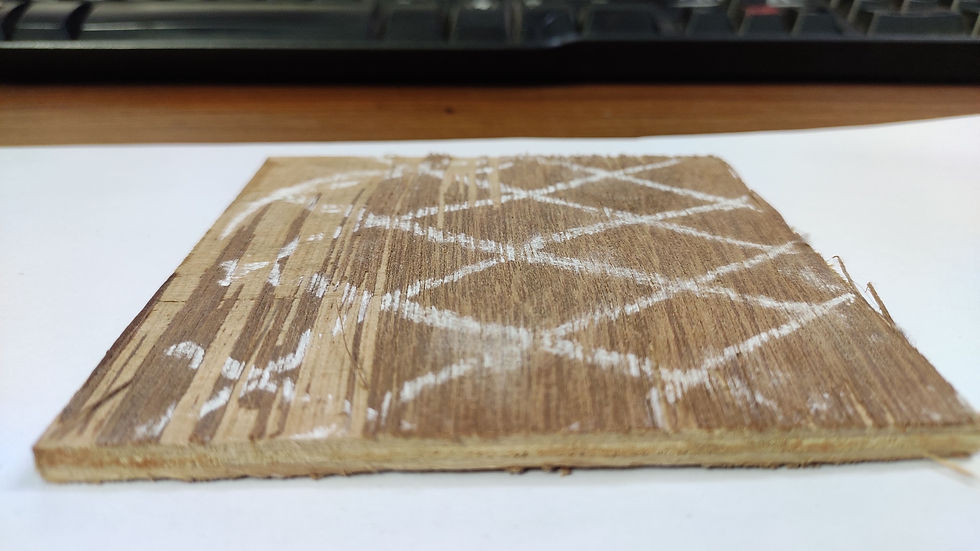What makes a mark and what takes a mark?
- Shreyas Vyas
- Sep 20, 2021
- 1 min read
The task which was given to us on the first day was to find out what makes a mark and what takes a mark?

The idea behind this task is to encourage us to explore new mediums and their reactions/interpretations. Another goal was to get us started on understanding how different surfaces behave to different materials. The interaction of two different surfaces often leaves a mark. And result is often an interesting visual that explains the relationship between them.
The relationship can be as violent as a nail scratching through a paper or as mild as the little patterns that you can see on top of a peda (Indian Sweet).
Below are some of the examples which I found interesting... A piece of sunboard behaves differently to different materials. Here I used a cake-knife and a cutter to try and make a mark on it.








The crack on this mug- a blunt force mark made by another utensil? or the words "coffee" written with help of a permanent marker. or the stains of various types of paint on it.



Comments